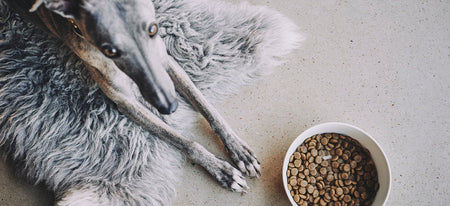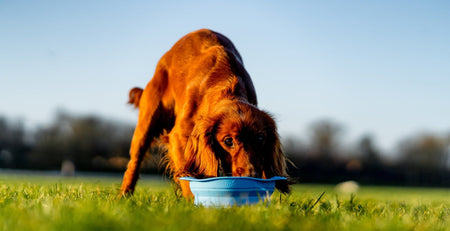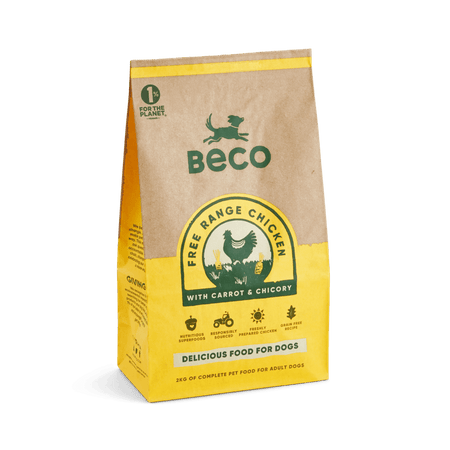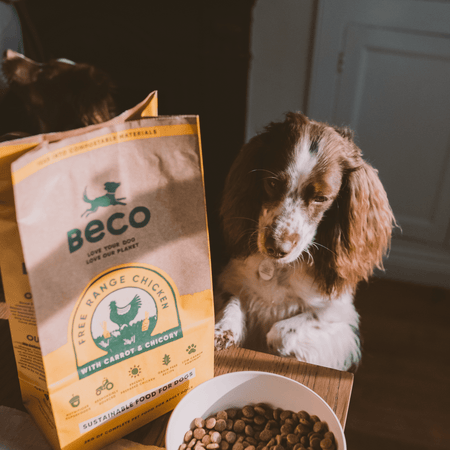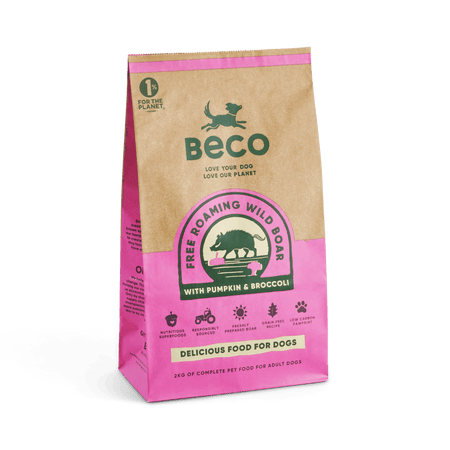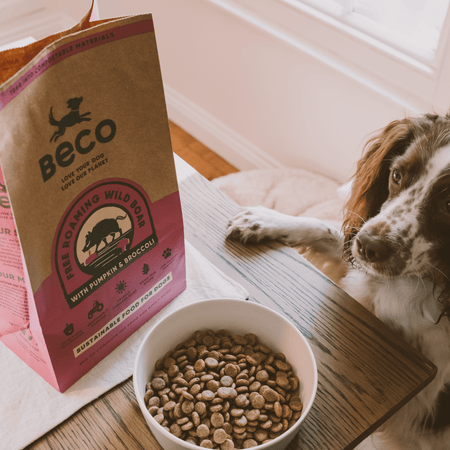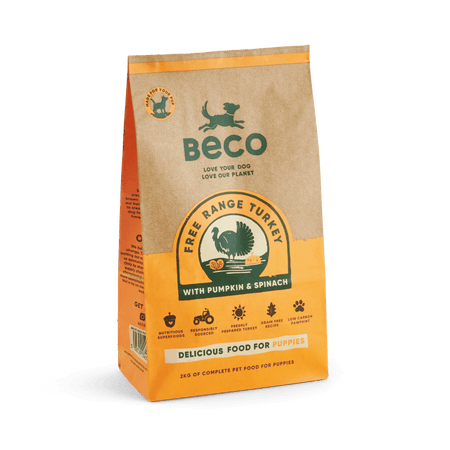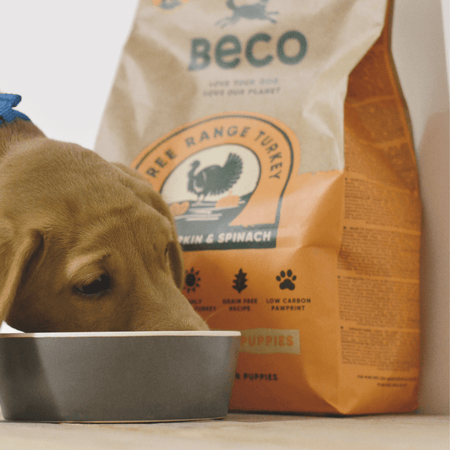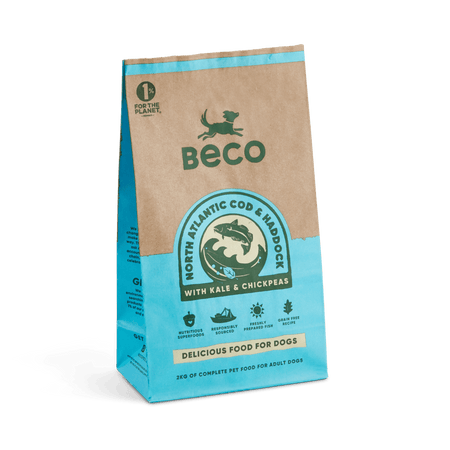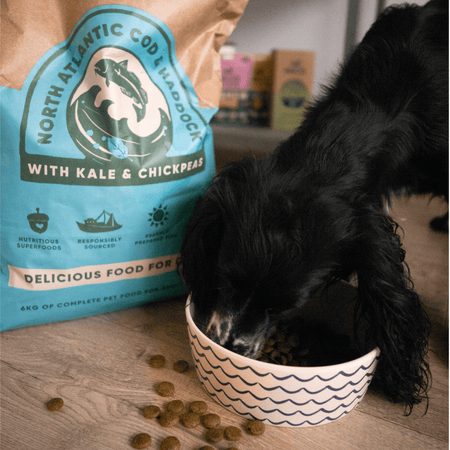The debate surrounding whether kibble or raw dog food is best for your dog is complicated. There are many different versions of ‘kibble’ and ‘raw’, so it’s not as simple as one is terrible for your dog and the other good, but there are benefits to both. We thought we would outline the positives and negatives of raw and kibble dog food to explain the discourse and help make choosing healthy dog food easier.
In case you’re short on time, here’s a quick rundown of what you should know:
Key Notes
Raw dog food diets can provide benefits such as shiny coats, healthy skin, higher energy levels, cleaner teeth, and better breath
When selecting raw dog food, it’s essential to consider a dog's needs, such as age, weight, and activity levels, and to choose a food with a lower bone content to avoid constipation.
Kibble dog food has the advantage of being long-lasting, more hygienic, easier to feed, and more convenient.
Different types of kibble exist, including entry-level foods containing cereals such as maize and multiple meat sources in each recipe and naturals based on rice with different protein sources.
Raw Diet For Dogs
With the name ‘raw’, it’s easy to presume this is the healthiest option. Raw diets are on the rise for humans because they are claimed to be the most natural, but is this the same for dogs?
The main benefits raw food typically provides are:
Shiny coats
Healthy skin
Higher energy levels.
Cleaner teeth & better breath
Smaller and firmer Stools
Best Raw Dog Food
We recommend when selecting raw dog food, it's essential to consider your dog's needs, such as age, weight, and activity level.
Regarding the ratio of meat to bone, raw food varies. Some are 90% meat, 10% bone, 70% meat, and 30% bone; others recommend 100% meat and no bone. Each dog has a different level of tolerance to the bone, so it’s a personal choice as to what suits your dog best. However, overeating bone can cause constipation in most cases, so choosing a food with lower bone content is best.
Not all raw dog food is grain-free; some contain carbohydrates like rice or potato. So, if you are trying to choose a healthy food low in carbohydrates, don’t presume that raw is the way to go.
Benefits Of Raw Dog Food
Firstly, raw is typically the most optimal option for protein being bioavailable. On average, raw has around 13-14% crude protein. Crude protein is the measure of all proteins within dog food. This may seem reasonably low compared to other options, but raw is the most bioavailable, thus meaning it can be absorbed more effectively, and 13-14% is typically what dogs would be used to in the wild.
If you feed your dog pre-mixed raw mince, you will struggle to find a product made from only one meat source. Feeding your dog healthy food containing only one meat is far better for digestion. If your dog has intolerances, feeding them mixed-meat dog food increases their chances of a flare-up. The most common meat allergy occurs in chicken, and beef is the second most. But chicken and salmon are commonly found in most dog foods, as these are two of the cheapest to produce.

Negative Of Raw Dog Food
From a practical perspective, you also need a lot of freezer space for raw dog food and a separate fridge for your thawed pack. The alternative is being comfortable keeping it in the refrigerator with your own family's food. Raw can be challenging if you're short on fridge/freezer space. Most raw dog feeders end up with a separate dog fridge/freezer, so you should consider this before making your mind up.
What is Kibble Dog Food
Just like raw food, the difference between types of kibble out there varies considerably, so we mustn’t shine all kibble foods in the same light - for both good and bad.
However, some typical generic advantages of kibble include:
It’s long-lasting
It’s more hygienic
Easier feed
More convenient
Can use it as treats
A complete dog food
But we should dive into the details to discover additional advantages certain brands offer.
Is Kibble Dog Food Healthy?
Many kibbles on the market use meat meal as their only source of protein, and with this comes the same issue as raw dog food, in that multiple types of meat are harder to digest. Another concern lies with the ambiguousness of the label, as you are unsure of what your dog is eating.
Kibble is also often heated at incredibly high temperatures. When protein is exposed to heat, it affects the digestibility of the meat and limits the number of nutrients the dog can absorb. Different brands heat kibble at different temperatures, so if possible, try to determine the rough temperature at which your dog's food is being cooked. We don’t go above 240 degrees, but you may find that your dog's food is being cooked as high as 450 degrees in some cases, which dramatically reduces the nutritional value.
The Varying Types Of Kibble
There are many different types of kibble. These are categorised into subsections. We thought we would explain a few to look out for and what they mean.
Entry Level Foods
These will be often filled with cereals such as maize, and ‘meat meal’ would be their only meat course - typically around 18%. These foods contain closed compositions where ingredient sources are grouped in terms such as ‘poultry’, ‘animal derivatives’ or ‘oils’. This allows them to add anything available at the time of production. This is not the mindset of a company that strives to provide dog food for optimum health. This category of kibble contains multiple meat sources in each recipe. If your dog has allergies, you might find it challenging to know what food to eradicate from its diet to solve the problem.
Naturals
These kibbles are based on rice; over 60% rice and typically 18-23% meat meal, depending on the brand. The protein source will also differ from brand to brand. Proteins will still be mixed in natural dog food, so be careful if your dog has noticeable allergies. These foods often contain high amounts of chicken and salmon to bulk their protein percentage cheaply.
Grain Free
When kibble is labelled grain-free, they will most likely use sweet potato as a filler. It is a healthy choice for humans because it is lower on the GI index than other carbohydrates. However, dogs’ digestive tracks are entirely different - they are designed to digest meat. Sweet potato contains more sugar than a regular potato, so you should be wary of it.
How We Approach Raw Food vs Kibble
At Beco, we approach dog food differently, from how we source our ingredients to the reasons behind our composition.
Protein
For our protein source, we look at bioavailability and digestibility. This is how we determine how much and the type of fresh meat we put into our food.
Regarding what protein we use, our food contains an easily digestible single source. Our boar and haddock are novel protein sources, meaning that they are not commonly used in dog food, and your dog is unlikely to have intolerances.
Nutrition
As mentioned previously, our kibble never reaches the height of 450 degrees when cooking, as our cap off is 240 degrees. This means the food maintains its high nutritional value as it is made more bioavailable and avoids harmful elements.
Hygiene
Regarding hygiene, we always source fresh, human-grade meat transported in cold storage to the point of manufacture, so we start with fresh meat. This is compared to meat meal, which is stored in ‘ambient’ conditions. This means no temperature controls, resulting in meat decomposing before it hits the plant to be turned into dog food.
Grain-Free
All the food at Beco is grain-free. Instead of grain, we fill our food with carefully selected vegetables that ferment in the dogs’ stomachs and create good bacteria that boost the immune system. We use white potatoes, perfect for dogs that have sensitive stomachs. We add in field beans to increase the fibre content and peas to balance out the GI index.
It all Starts at the Source
It’s not just the dogs’ health that determines the meat we use: sustainability is the driver for us in everything we do. This has become ever more prevalent with the recent spike in dog ownership.
At Beco, our meat sources are either sustainably and ethically farmed or sustainably caught. We were the first to use only Free Range Chicken, MSC Cod, Haddock, and single-source wild boar. We source as close to home as possible to minimise transportation emissions for our vegetables and botanicals. We are also the first dog food in Europe to sign the better chicken commitment.
Final Thoughts
It is clear that when it comes to choosing food for your dog, many conflicting opinions make the notion of having one definitive answer impossible. Ultimately, it is about finding the right food for your dog’s digestion while considering practicality and ethics. Look out for dog food with a short ingredients list containing specific meats, fruit, veg and no chemicals. The rest comes down to personal preference, but hopefully, we have made the decision a lot easier for you and your dog.

